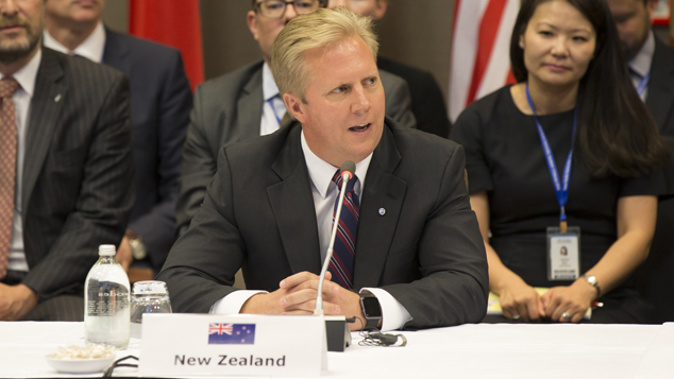
Countries in the Trans-Pacific Partnership (TPP) have agreed to look at ways to move the trade deal forward without the United States after President Donald Trump pulled out in favour of an "America First" policy.
The decision on Sunday kept the agreement alive, but fell short of a wholehearted commitment to move ahead immediately.
It came on the sidelines of a meeting of Asia-Pacific Economic Cooperation (APEC) countries that has highlighted the turmoil in global trade negotiations since Trump ended the old order in the name of protecting American jobs.
Japan has been at the forefront of efforts to get the remaining 11 TPP countries to pursue the agreement, which members have also long seen as a way to contain an increasingly dominant China.
One day, the remaining members hope to bring the United States back too.
"Eleven countries have shown a lot of unity and a desire to move through some of the equations that will be required to look to put the agreement into force," New Zealand Trade Minister Todd McClay told Reuters in Hanoi.
One of the biggest challenges is keeping on board Vietnam and Malaysia, which signed up for the TPP deal and promised to make major reforms largely to get better US market access. They now want to renegotiate some points.
Officials from TPP countries will meet again in Japan in July and bring proposals in November, McClay said.
A statement from the group said their work would address "concern about protectionism" and maintaining open markets.
Fears of protectionism have grown under the Trump presidency and the gathering in Hanoi has done nothing to quell them.
New US Trade Representative Robert Lighthizer has held one-on-one meetings with key partners, reflecting Trump's emphasis on bilateral trade deals that he argues will give America a better deal.
China, putting itself forward as a global free trade champion in light of the US shift, is pushing a free trade agreement to encompass the vast majority of Asian economies. The Asia trade deal it favours is called the Regional Comprehensive Economic Partnership.
That trade deal covers only Asian countries, not the United States. It is not as exhaustive as the TPP deal and doesn't have its strong protections for intellectual property or for labour rights and the environment.
Take your Radio, Podcasts and Music with you









